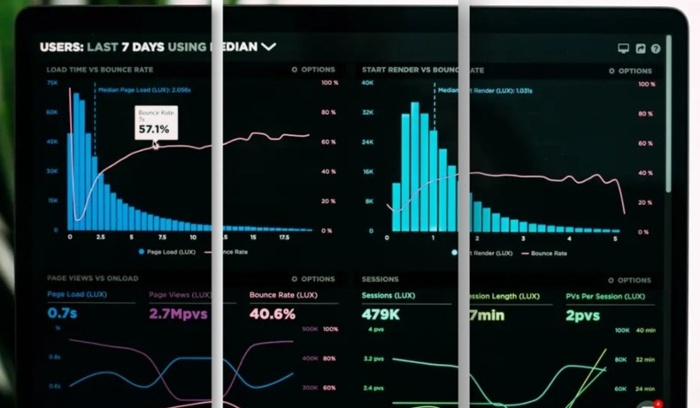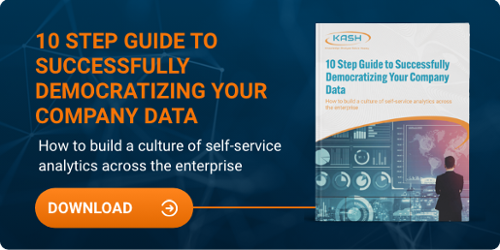What is Predictive Analytics, and How Can it Help your Business?
Topic:
Democratizing Data
Companies have been collecting and reporting on data using computer systems since IBM unveiled the first mainframe computer system on April 7, 1964 (the same year The Beatles released the Hard Day’s Night album). Much of the reporting developed then was based on previous actions and events. Its focus was on past performance only. As companies became more comfortable using reporting and traditional business intelligence (BI) tools, their interest (and need) grew to want to know about predicting future performance to help drive strategic decisions.
While predictive analytics has been around for decades, it gained a lot of attention around the 1990s as techniques and methodologies in data mining, statistical analysis, decision trees, and the like matured and became a standard extension of business intelligence platforms and tools.
What is Predictive Analytics?
Predictive analytics is a form of advanced analytics that examines data to answer questions, identify trends, reduce risk, and extract insights to help businesses create strategies and make impactful business decisions. The ability to predict future events, results, or trends more accurately is crucial across industries. Predictive analytics uses statistical models derived from historical data to present possible future outcomes and allow the business to anticipate more accurately what is likely to happen in the future. It uses data science methods such as artificial intelligence, data mining techniques, and the blending of current and historical data to predict future outcomes.
In many cases, predictive modeling is synonymous with machine learning, and in other cases, some consider predictive analytics an extension of business intelligence. When deployed with business intelligence it is commonly referred to as predictive analytics. Whatever the title, the end goal of the predictive analytics process is the same: to develop actionable insights to optimize future processes using large historical data sets.
Why is Predictive Analytics Important?
Today, predictive analytics is a proven method for driving increased value based on data and statistical models across all industries such as marketing, manufacturing, financial services, health care, and other fields to optimize critical business processes and make informed business decisions.
Every day, businesses collect massive amounts of data on all aspects of their business including, business operations, customer behavior, supplier information, employee satisfaction or performance, and so on. But without transparency into what the data means and how businesses can take action to increase profitability, these large amounts of data are useless. Some say that the use of predictive analytics, machine learning algorithms, and artificial intelligence are the foundation of better business outcomes.
Businesses use predictive analytics across a wide variety of industries and use cases. For example, predictive analytics measures big data or large data sets of customers buying behaviors and purchases to uncover cross-selling opportunities. As a result, these predictive analytics models help businesses attract, retain, and grow their most profitable customers, improve operations, forecast inventory, make informed pricing decisions and accurately predict healthcare outcomes.
Examples of Predictive Analytics
The predictive analytics process varies greatly by industry, application, and the size of the organization. While there are many applications and different ways businesses can implement predictive analytics, here are a few examples of predictive analytics in action.
Predictive Analytics in Education
Utilizing Predictive Analytics Techniques to Drive Higher Levels of Student Retention
To optimize and maintain the highest levels of retention possible, a mid-west university began looking for ways to bring together its siloed data and tap into it to ensure that “at-risk” first-year students are appropriately identified and advised, so they become more likely to continue into their sophomore year.
They conducted extensive research to determine which data sets were most critical in identifying “at-risk” students in order to optimize their retention numbers. Those findings, which include board scores, gender, high school GPA, mid-term grades for both fall and spring semesters, financial aid status, and attempted hours versus completed hours, were then used to build the scoring model.
“Predictive analytics allows us to determine more accurately who those students are. In addition, the predictive analytics results help staff examine and validate their findings, so they can ensure they are focusing their efforts on the right students.”
Some pre-deployment simulations are showing accuracy rates as high as 86 percent. And we will continue to refine the model as we go along, to boost precision even further. Once the model is deployed, we anticipate the return on investment will be significant,” he continues. “If the product helps us to save just one or two students, it will pay for itself.”
Predictive Analytics in Health Care
Predictive Analysis Improves Patient Outcomes in Health Care
By looking at data and outcomes of past patients, predictive analytics algorithms can be used to provide insights into methods of treatment that will work best for the current patient population. One example of using predictive analytics is the application of blood tests. Predictive analytics allow medical professionals to assess how a patient responds to treatment months earlier than previously available using standard imaging scans. As a result, predictive analytics will enable providers to use a course of treatment sooner if the current is not working, saving patients from months of ineffective and sometimes painful treatments. This improves the quality of patient care, saves on health care costs, and increases reimbursements to the provider.
Predictive Analytics in Manufacturing
Preventing Machine Malfunctions and Lowering Scrap Costs Using Predictive Analytics
A key benefit to using predictive analytics in manufacturing is to optimize operations, prevent equipment malfunctions, reduce shop floor downtime, and lower scrap costs. Predictive analytics is a commonly used technique of training algorithms using historical data to accurately predict when a piece of equipment will likely malfunction. When the algorithm identifies a potential malfunction on a particular machine, it can notify the shop floor in real-time to shut down the machine and perform proactive maintenance to address the issue. As a result, predictive analytics can save the company millions of dollars in damaged products and reduce product returns due to poor quality and repair costs.
Examples of Predictive Analytics Tools
Predictive Analytics tools have been around since the late early 90s. Most of the popular BI vendors added predictive functionality to their technology platforms. SAS was one of the first companies that offered tools specifically designed for the analyst or data scientist, and currently owns 33% of the predictive analytics market. IBM’s SPSS product allows companies to use existing data to build predictive models in the SPSS visual workflow and model builder. Information Builders added RStat to their platform, which leveraged the R language to develop and deploy predictive models. Eventually most BI and analytics vendors offered PA tools as part of their product portfolio. All of these tools combine various data analysis features like Decision Trees, Text Analytics, Neural Networks, along with data mining, machine learning, and other techniques.
Developing a Predictive Analytics Process
Regardless of your industry, predictive analytics can improve overall decision-making with more accurate insights and metrics. There are several common predictive models and the types of questions they can best answer. Recent advancements in predictive modeling allow businesses to make better data-driven decisions, reducing potential risks and maximizing profits, making it a must-have in any data analytics strategy. The addition of automation, machine learning algorithms, and deep learning procedures are generating new sources of innovation like prescriptive analytics and AI-based solutions to help companies draw specific recommendations and suggest a course of action.
To learn what it takes to develop a business intelligence strategy, which includes predictive analytics and machine learning methods and techniques by downloading the eBook, “A 10-Step Guide to Successfully Democratizing Your Company Data.”
